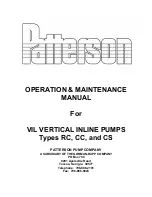
4826 Sterling Drive, Boulder, CO 80301
PH: 720.406.8946 [email protected] www.pspower.com
Troubleshooting 8
Troubleshooting
©2007 PS Audio International Inc. All rights reserved.
Owner’s Reference
Quintet and Duet Power Center
®
these are disconnected, and the preamp or processor is connected only to the power amplifi er, turn
the system on and again, listen for hum. Should the hum now appear, it is a problem with your preamp
or processor or their interaction with the power amp. Before returning the preamp or processor to
the manufacturer, try a cheater plug to break a ground loop. Cheater plugs are simple devices that
convert a three prong AC plug into a two prong AC plug and in the act of converting three prongs, to
two prongs, they disconnect the ground from the wall socket. Try one of these on the preamp, or the
power amp, or both.
If you determine that there is still no hum present when the preamp, processor or receiver is
connected with no inputs, then selectively begin plugging in your various inputs one at a time. After
each connection, check for hum until you discover the humming culprit.
VCR’s, surround processors, and any device that is connected to a television cable or satellite dish
can cause a loud buzz and should always be suspect. If, by the process of elimination described
above, you determine it is a component like a VCR that is causing the hum/buzz to occur, and using
a cheater plug or removing the ground pin on a PS xStream Power Cable doesn’t help matters, it may
be necessary to isolate the cable connection (CATV) with an isolation transformer. This inexpensive
device is available at most Wal Mart, Radio Shack or department store type outlets and is sometimes
called a ‘matching transformer’. If you have problems fi nding one, call your local cable TV company
for advice. The matching transformer will be placed between the cable TV cord and the VCR, TV or
processor.
Just remember, take the system down to its simplest level of connection. Find a way to hook the
system up with as many pieces of the system missing or not connected. Keep it simple and get it
to the point where the hum’s gone. Then start adding back components one at a time until the hum
returns.
Finding the problem is 9/10th of the work in fi nding a solution.
It could be the
cable TV


































